An Isao Takahata Retrospective
Studio Ghibli’s been quite the talk of the animation world since the groundbreaking success of Spirited Away with Western audiences in 2001. They’ve had a marvelous run before and since then, and films such as Princess Mononoke, Howl’s Moving Castle, and My Neighbor Totoro have become household favorites, cultural icons and forerunning examples of the excellence of Japanese animated films. The man of the hour, of course, is Hayao Miyazaki, whose aesthetic style, coming-of-age stories and fascination with the fantastical and technological alike have made him not simply one of the greatest animators alive but an auteur in his own right. Much has been written about his work, whether it is in the inspired and beautiful depictions of landscapes and various beings in Spirited Away, or the fascinating aerial vehicles in Porco Rosso and The Wind Rises, so it has slowly become apparent that Miyazaki’s work is incredibly wholesome.
But I hope to, in this piece, shed a bit of light on the other rather significant figure that contributed to the Ghibli fame: Isao Takahata, whom many will know as the director of one of Ghibli’s most harrowing (if not the most) film(s) to date, Grave of the Fireflies. His work, though not particularly well-known, provides a facet of realism and development which has since become equally significant in the success of the studio, and is thus especially worthy of attention.
Isao Takahata
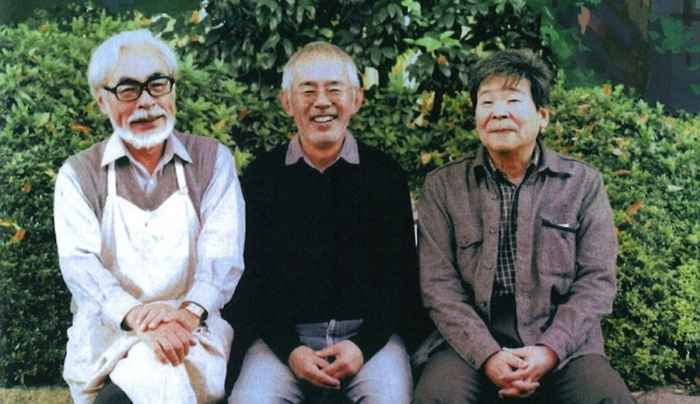
Isao Takahata was born in 1935 as the youngest of seven siblings in the city of Ujiyamada, Mie Prefecture. As a child, Takahata was no stranger to the horrors of war, having experienced and survived bombings and air raids by the U.S. on his hometown. His childhood war experiences would later become sources of inspiration and depictions in Grave of the Fireflies.
Yet despite the grim reality of both his childhood and its depictions in his most well-known film, Takahata’s work would become increasingly light-hearted whilst maintaining an innate fascination with the realistic everyday (a trait that he believes distinguishes himself from Miyazaki), careful to veer away from the overly fantastical. Prior to the formation of Studio Ghibli, Miyazaki and Takahata worked and collaborated on a number of films, including Horus: Prince of the Sun (1968), a children’s anime series Heidi: Girl of the Alps (1974) and two shorts, Panda! Go, Panda! and Panda! Go, Panda! The Rainy Day Circus in 1972 and 1973 respectively.
Before Takahata formally joined Ghibli in 1985, however, he adapted and directed two other films, Jarinko Chie (1981) and Gauche The Cellist (1982). The work of Takahata seen in Jarinko Chie exhibits his attention to detail at adapting his given source material and an inclination towards the slice-of-life genre, as well as a meandering pace, traits that are exemplified in his later work such as Only Yesterday and My Neighbors The Yamadas. And so, even before beginning with Miyazaki and Studio Ghibli, Takahata, in his pre-1985 works, has shown considerable talent in directing and writing compelling stories, perhaps maturing even earlier than Miyazaki.
The Ghibli Years
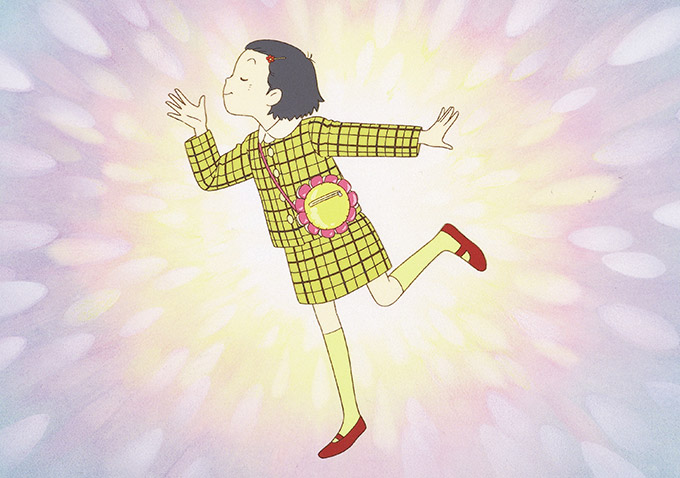
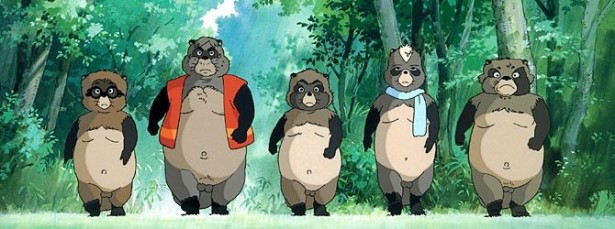
Only Yesterday
Upon the success of Grave of the Fireflies, Takahata’s first film with Studio Ghibli, he begins work on his next film, Only Yesterday, a nostalgic narrative concerning a 27-year-old Taeko, whose journey to the rural countryside spurs her to reminisce about her childhood and the choices she has since made. The cuts between her in the present and the memories she relives are excellent examples of Takahata’s vignette-like pacing he brings to his later work, such that whilst a fixed and apparent narrative appears to be absent, there always feels like there’s a rhythm entirely suited to his characters’ nostalgic nature, that we, as the audience, are constantly looking to the past through his protagonists’ eyes. There is a compelling sense of realism, a universal bittersweetness in this film that calls back not only to Takahata’s earlier work but distinguishes him from Miyazaki’s fantastical and overblown landscapes. Unlike Miyazaki, Takahata concerns himself with the minute and fleeting moments of significance, the points of epiphany or simple unknowing joy that exists in all of our childhoods.
Fantasy and Family: Pom Poko and My Neighbors The Yamadas
His subsequent two works, Pom Poko and My Neighbors The Yamadas, continue Takahata’s streak with nonlinear storytelling, preferring instead jumping from vignette to vignette, creating the occasional comic relief and allowing the audience to piece together the stories themselves. Pom Poko, whose premise deals with a group of tanuki (raccoon dogs) and their antics, fighting back against the deforestation and invasion of humans upon their habitat. The central themes and ideas call back to Miyazaki’s Princess Mononoke, though it is apparent that the approach of Takahata is vastly different, instead, he opts for voiceover narration and offbeat humor. A key characteristic of the Tanuki depicted in the film is none other than their large ballsacks, meant to symbolize their virility and playfulness. It’s a combination of factors like these, from the offbeat pacing, strange humor and idiosyncratic approach, that indicates Takahata’s belief that his films are directed more at adults as opposed to children.
The latter of the two, My Neighbors the Yamadas, is an adaptation of a comic by Hisaichi Ishii, retaining Takahata’s trademark pacing but also showcasing his capabilities at aesthetic and stylistic adaptation. Takahata retains the comic’s simplistic drawings of its characters, a quality that would have no doubt contributed to the film’s lack of popularity. Despite all this, it is a focus on the development of the characters, the family and their various everyday antics that bring his work back to the familiar ground of the slice-of-life, and so whilst it is rare that one might find a grand gesture or message behind My Neighbors The Yamadas, it is certainly a pleasant experience to simply be among these strange vignettes, and who accurately reflect the silly moments we all have with family.
The Tale of Princess Kaguya
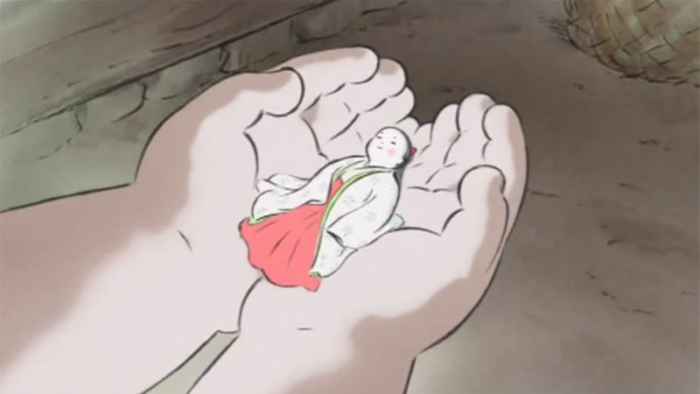
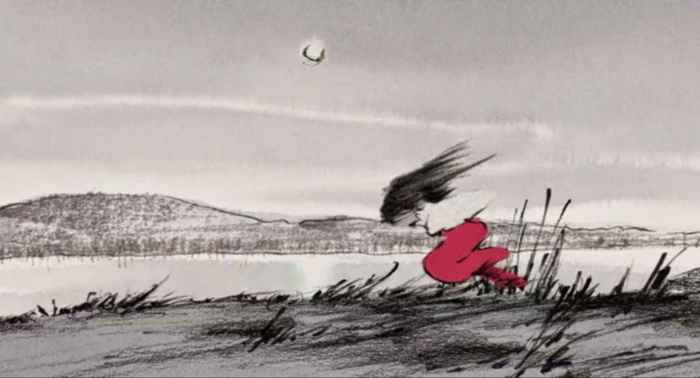
Finally, we come to Takahata’s crowning Ghibli achievement, a film I personally believe far exceeds his previous work and is even marginally better than Grave of the Fireflies. This beautiful, heartwarming film is none other than Takahata’s latest addition to the Ghibli ouevre, The Tale of Princess Kaguya. An adaptation of the age-old japanese myth “The Tale of the Bamboo Cutter”, the plot surrounds a girl who is found inside a glowing bamboo shoot. Her parents find her and decide to adopt her, calling her a princess for the ceremonial robes she wore when she was found. Soon, “Little Bamboo” (a name given to her by her friends) finds herself confronted with love, adulthood, societal expectations and the demands of her supernatural lineage, all of which come together in fascinating form.
There is no lack of discussion on Miyazaki’s inimitable visual style, and so it is perhaps apparent that Takahata’s lack of it puts him in a different league from Miyazaki. Yet in spite of this, Takahata uses it to his advantage, and the sheer visual storytelling present in this film is otherworldly. Each frame is reminiscent of “Japanese watercolor paintings brought to life”, stated by Kyle Anderson, a critic, and reviewer for Nerdist magazine, further explaining that “The colors, muted in the way a watercolor painting is, seem to flow and reform like the bodies of water that play such a big part in the narrative. It looks like we’re watching a much older film, in a good way. If drawn and animated in the traditional Ghibli style, these stories would absolutely not have the same effect.” Takahata, in his almost decade-long hiatus since My Neighbors The Yamadas, has brought to life something truly awe-inspiring. The style may not be as familiar or recognizable as the usual Ghibli fare, but it is entirely befitting of the story that is rooted in deep folklore, reaching instead for the pinnacle of any adaptation, which is accurately and effortlessly translating the sheer emotional turmoil of our young princess, onto the watercolor page.
Work and Influence
In an interview, Hiromasa Yoneyabashi, former director of films for Ghibli and now associated with Studio Ponoc, recounts the advice of Takahata, stating: “the content decides what kind of expression to use. If you only have one form of an expression, it just becomes a style, rather than a fit with the content.” Takahata’s free-form visual style is informed by his inclination to always respect the source material, and to ensure that form follows content. It’s no surprise, then, that Takahata lacks a distinctive visual style, since his works are continuously informed by the nature of its source, and the sheer variety of the works he has chosen to adapt have thus led to a plethora of different visual languages.
As such, in some ways, Takahata’s an auteur as well, just in a different sense. All throughout his films, well-received or not, is a careful, calculated precision in editing and sound, perhaps not as immediately noticeable as that in Miyazaki’s films but present nevertheless. It is in his fixation with the minute, the moments instead of the grandeur, and his rootedness in realism, which gives his works a realm that isn’t always inhabited by Miyazaki, and in his meandering and vignette-like pace, which creates a bittersweet vision of the everyday, and the nostalgia that comes along with the inevitable passage of time.
We can see his influences in landmark works of animation, such as Mamoru Hosoda’s Wolf Children, and Michael Dudok De Wit’s The Red Turtle, a film produced by Takahata himself. Of the wealth of research and praise of Studio Ghibli’s incredible works, this, in particular, pertains to Takahata’s films: “adults can enjoy them as much as children, and those who rewatch a Takahata film as an adult may notice that their impressions of the film or characters change”, so let us hope that generations of people, children or not, will continue to appreciate, enjoy and develop, evolving impressions of Takahata’s work.
What do you think? Leave a comment.


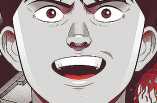

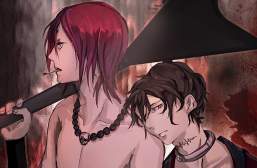
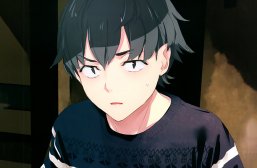
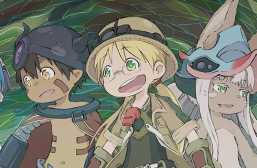
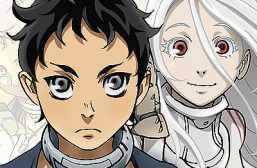
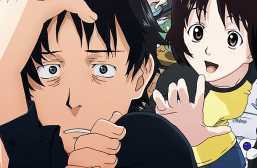
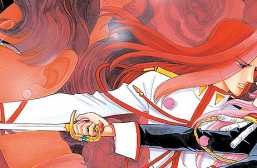
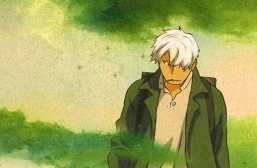
Both Miyazaki and takahata are greatest gift to moviegoers.
Absolutely agree. There are tons of Japanese animators in our contemporary times but few have the far-reaching influence that Ghibli has.
The pineapple scene in Only Yesterday perfectly matched my own experience of having my first “real” pineapple as a kid. From my parents not being sure what to do with it, to the disappointment of how hard and unsweet it was compared to the tinned ones I’d had up till then.
I think it’s amazing when you wholeheartedly relate to an experience that’s beautifully depicted on film. Even if the story’s out of the way, we empathize with the core emotions and ideas: which is why I think the scene of Little Bamboo running away struck such a chord with me.
Wonderful, wonderful film. I remember watching this at university.
Lovely, slow-moving, emotionally deep film. Definitely not the sort of animation that is for children.
The Tale of Princess Kaguya is a film, beautiful illustration and lots to think about. An allegory on childhood, adolescence and parental grief? It’s beautiful and sad in equal measure.
I’d say it’s one of the best adaptations of proper mythology in the past few years. No extensive repackaging, no overt pandering to the modern audiences, just a return to the bare roots of storytelling and keeping its core themes the same. I think doing this successfully is tremendously underrated.
I love this film. From the infectious celebration of pastoral life in the first part, to the subversive portrayal of life as an aristocrat’s daughter in the second part, to the final part that has the Buddhist philosophy on desire playing a key role in the denouement. It is a must watch indeed.
Absolutely stunning. Have been looking for some of the music online today. Full of ninjas cutting onions, though…
Funny you’d mention music because Procession of the Celestial Beings is probably one of the most hauntingly memorable pieces I’ve heard in recent times. Just the sheer contradiction of something so angelic paired with the tragic… truly beautiful.
This is one of Ghibli’s finest. It is so magical. A beautiful exploration of love, life and growing up.
I enjoy Ghibli animations but I find those which are most Japanese to be the most memorable. I mean Howl’s Moving Castle was very entertaining, I liked Spirited Away, but the older PomPoko with its raccoons and fox spirits has left more images in my mind and I want to view it again more often than the more Hollywood, more slick productions.
Sad to think the Ghibli era is coming to an end.
I think you mean you dislike the ones who’ve attained a more western popularity? Hahahaha because I think all of Ghibli’s films are Japanese.
But you’re absolutely right: I think it’s pertinent to think of ghibli’s future, especially what will happen after Miyazaki and Takahata pass. It’s probably unlikely that Ghibli will continue, but we can take comfort in the fact that their legacy will live on for a very, very long time.
Lynsey and Matchbox. Although Ghibli is sadly no more, its legacy continues within the new Studio Ponoc, which has the former Ghibli lead film producer, Yoshiaki Nishimura at the helm. Ponoc recently released its first animated film ‘Mary and the Witch’s Flower’ (‘Meari to Majo no Hana’), directed by Hiromasa Yonebayashi, who directed Ghibli’s last all-Ghibli film, ‘When Marnie was There’ (‘Omoide no Marnie’) in 2014, as opposed to the ‘La Tortue Rouge’ co-production with Wild Bunch. Yonebayashi says he wants to take animation back to Ghibli’s early days, so only time will tell if he succeeds. On behalf of all Ghibli fans, I truly hope he does.
I do not know much about this topic but I have gained an interest in Ghibli. Beautiful visually!
Hey Munjeera! Always glad to see you enjoying yourself hahaha, thanks for the invaluable advice 🙂 article wouldn’t be as streamlined without your help.
My pleasure. I learn so much from articles like yours and my students are so surprised when I talk to them about Japanese animation.
The end of Pom Poko gets me every time… especially since I first watched it in the actual suburb of Tokyo that they are paving over the forest for in the film – so it was pretty impossible to not know how it would inevitably end!
Princes Kaguya has all the technique, naturalism and depth of character Takahata is known for. There is one sequence in particular that immediately seared itself into my memory as a Ghibli great, the sheer anger of the protagonist laid shockingly bare. Kaguya’s quiet intelligence lets the film remain compelling during its slowest narrative sections, where the animation is deliberately sparser, faded and muted. The final scenes brought a tear to my eye, partly for their poignancy and beauty, but also because I was unable to escape the knowledge that they were also an ending to Takahata (and, in a sense, Ghibli’s, as Miyazaki and Takahata between them share such a great portion of the studios’ major productions) oeuvre.
Should we watch the original Japanese or English dub?
The Japanese voice track that I listened to was excellent, Kaguya especially. I’m pretty agnostic in that debate – the original is presumably tuned better to the subtleties of the characters, but an excellent dub can retain most of them while making appreciating the animation easier, and obviously a portion of the original language’s intonations’ and pitches’ meaning will be lost on a non-speaker. The only thing to be careful of, and several Ghibli films (including Kiki’s Delivery Service) sadly fall victim to this, is that the dubbed acting might be read from a different, less accurate, script, than that available in the subtitles.
Yep I absolutely agree. I always recommend the subbed version, unless a dubbed version is widely known as superior (Cowboy Bebop comes to mind, and their dubbing truly does add a dimension to the storytelling).
When I was first exposed to Anime, around 1991 ( a screening of Akira) I was working as a trainee animator at Disney. At the time I was feeling disillusioned about animation in general, particularly the stories in Western films and TV, but discovering the wealth of genres and styles that the Japanese were willing to experiment with has kept my enthusiasm for the medium alive. Compared to the very best that Japan continues to produce, with rare exceptions, the rest of us are just fumbling in the dark.
Akira is a masterpiece. I wonder how many people had it as their introduction to manga/anime and then felt let down when they couldn’t find anything that came close to it (at the time)?
I find Takahata’s work much more lyrical than Miyazaki’s generally. Only Yesterday is my favourite of all the Ghiblis.
Great retrospective on one of the greatest film makers.
I respect the work that went into his films, but I just don’t like them. Spoilers: Grave of the Fireflies. I’ve never cared for it and I always found it very emotionally manipulative and I found my anger with Saita’s stupid decisions distracted heavily from the sadness I was supposed to feel with Setsuko’s death.
Seita is not meant to be seen as a hero in this Grave of the Fireflies nor is he intended to be particularly likable. He is rather painted as a flawed human being whose naive child like pride, stubbornness and inability to face his own demons slowly kills first his beloved sister and then ultimately costs him his own life. Many describe Grave of the Fireflies as an anti-war film, but it’s not really that either. It’s more like a detached character study on human nature in all it’s beauty and ugliness.
The film looks at Seita and his struggles through a distant sort of detached lens. He is neither portrayed as the villain or as a tragic hero. He is rather just a human being making terrible mistakes that he himself isn’t even capable of recognizing for what they are. We as human being rarely see our own folly until after the fact and Seita’s lack of self reflection is hardly uncommon, particularly for one his age who has suffered tragedy. The only point in the movie where Seita really seems reflective is at the very end after he has died. In life it was his inability to self reflect and face his demons that led to his tragic downfall.
The ability and desire to look away from pain and suffering in forced indifference is one of the most prevalent and ugly of all human traits and it is the cardinal sin of almost all the characters portrayed in Grave of the Fireflies. People will rather continue down their comfortable little routine and turn their heads the other way than engage with someone or something painful or frightening. We even commit this sin towards our own selves, looking away from the darkness and pain within our own hearts, driving it away into the dark corners of our minds and pretending its not there until it finally swallows us whole. I think that is the real message and story of Grave of the Fireflies. It is a story not of triumph of the human spirit, but of its failure in all it’s tragic beauty and ugliness.
I know that miyazaki is all time favourite of most of the ppl. But many ppl dont know studio ghibli won’t even exists if it wasn’t isao takahata. I have huge respect for both of them and for studio ghibli as whole. I would say though isao takahata is true legend, i find his movies much impactful then miyazaki. My all time favourite is grave of fireflies and only yesterday.
Informative and so well delivered. To be expected by authors on The Artifice.
I am delighted to see this article published. I can’t really add anything to those suggestions I made during the editorial process, other than to say “great work”, really well presented and an absorbing, informative read…but then, I am bias (as you know) and a keen fan of Ghibli’s amazing output. With that being said, I’m off to watch ‘Only Yesterday’ yet again; still one of my favourites. Two thumbs up from me.
Kind words Amyus! But I really, really appreciate it. Thanks for the advice and comments, it has truly helped, and I’m glad you continue to find such joy in Takahata’s works as many do with Miyazaki’s.
I was really not sure about PomPoko, and even My neighbours the Yamadas was interesting but not that special. So I suppose I have always rated Miyazaki more highly.
Yeah, they’re certainly very different creatively. Even Takahata’s taken a step back and said that Miyazaki’s clearly the more talented creator, but I do think Takahata’s tremendously underrated. PomPoko and My Neighbors The Yamadas aren’t his best works, but I believe Only Yesterday and Tale of Princess Kaguya cement him as an equally versatile and talented artist.
i’m always looking to broaden my aspects (as i definitely have been watching the same ghibli films for the longest time now) and this definitely gave me some more movies to add to my watch list.
I’m impressed with the way you’re able to breakdown complex concepts into thoughtful and well articulated studies of artistry. Really, what you do is an art in and of itself, and I’m grateful for your work. I appreciate the clearly significant care you’ve taken researching and presenting my favorite director’s work.
They’re brilliant at Studio Ghibli.
I don’t get the obsession with anime but I know the kids and teens absolutely love it. The global market for this is growing quickly.
It’s story telling. Been going on since we lived in caves.
Thank you so much for your invaluable insight. You must think you’re witty or funny, making such an ignorant comment that says nothing about the importance of the medium. Why bother creating films? Oral storytelling works just fine, doesn’t it? Why bother writing original works?
On an ordinary day I would have zero patience for trolls like you, but today is an occasion for sensitivity. Though I emphasize, you have no place amongst the intellectually curious here.
Pom poko has something to do with japan new left student movement.
Oh i didn’t know about this! It sounds fascinating though, are there any articles you could point me to? I’d love to read more about this 🙂
To everyone who has supported, read and enjoyed this article:
I’m incredibly shocked and sad to find out that Isao Takahata has passed away at age 82 last night. His films, as well as Miyazaki’s, have played a huge part in shaping my perspectives on art, life, and animation, and he will be sorely missed. Still, his legacy lives on in Studio Ghibli, in the unforgettable film experiences he has created, in his attention to detail, careful approach to animation, and the heartfelt moments we have shared with his wonderful, vivid characters.
I will end this on a similar note, with the reassuring realization that generations of artists, writers, and people will continue to enjoy his and Ghibli’s works: to find new life with each rewatch, to see their own experiences seamlessly translated to the screen, and to constantly evolve and progress with a nostalgic eye toward the past which we will always hold dear.
“Go round, come round, come round… come round, oh distant time. Come round, call back my heart. Come round, call back my heart. Birds, bugs, beasts, grass, trees, flowers. Teach me how to feel. If i hear that you pine for me, i will return to you.”
-Kaguya-hime no Monogatari
-C/Matchbox
RIP Isao Takahata.
Whenever we lose one of the greats, it should be a common practice to share articles about their stellar line of work, rather than ad-heavy recycled articles about their death.
Thank you very much for the lovely retrospective.
Rest in piece Takahata.
Saddened to hear about Takahata’s passing. Kaguya and Grave of the Fireflies are both brilliant and unique.
I love most of ghibli movies. The movies will give you high impact towards emotion and makes you think about many things after watching.
So sad to hear about Takahata’s passing. I can only hope that wherever his ‘heaven’ is, it’s every bit as imaginative, inspiring and humorous as was his creative output with Ghibli. At the very least, he’s left us with a wonderful memory and a legacy for up-and-coming animators to continue.
In hindsight, your article couldn’t have been more timely and apt.
Thank you for sharing this, it was a very interesting and respectful piece. I love the Studio Ghibli films and am always interested to learn more about the creators.
Thank you for your kind words. I didn’t manage to mention it in the article, but if you’d like to know more about how Takahata/Miyazaki work, as well as the behind-the-scenes of various Ghibli films, you can check out the documentary “The Kingdom of Dreams and Madness”.
Only Yesterday is such a deep film
I adore Ghibli movies and it was very interesting to read this article and look back on one of my favourite production companies! Great article.
Crazy that I’ve seen all these movies and never known he played such a big part.
Mr. Isao Takahata was not only a great director but also a gentleman who discovered many talented people.
Is there a way I could see Takahata’s work or his movies?
Hi Jane, I think you could search online for some of his films. Otherwise, you may have to get your hands on one of the dvds. Gkids has a full collection of all Ghibli films, if i’m not wrong.
I have technically been a fan of Studio Ghibli films since being introduced to My Neighbor Totoro in about 1995 by an artist friend. I loved that film, but was mostly unaware of the other Ghibli films until Spirited Away was released. Now I have finally collected most of the available DVDs, and I am learning as much as I can about the Studio and its contributors to enhance my enjoyment of the films as I watch them. The artistry, the wonderfully simple yet somehow magical moments of daily life, the memorable characters, these films haunt me in a good way long after viewing them. This article was very interesting and helped shed light on the different background and approach that makes Takahata’s films thoroughly Ghibli but also uniquely his own. Thank you for this article!